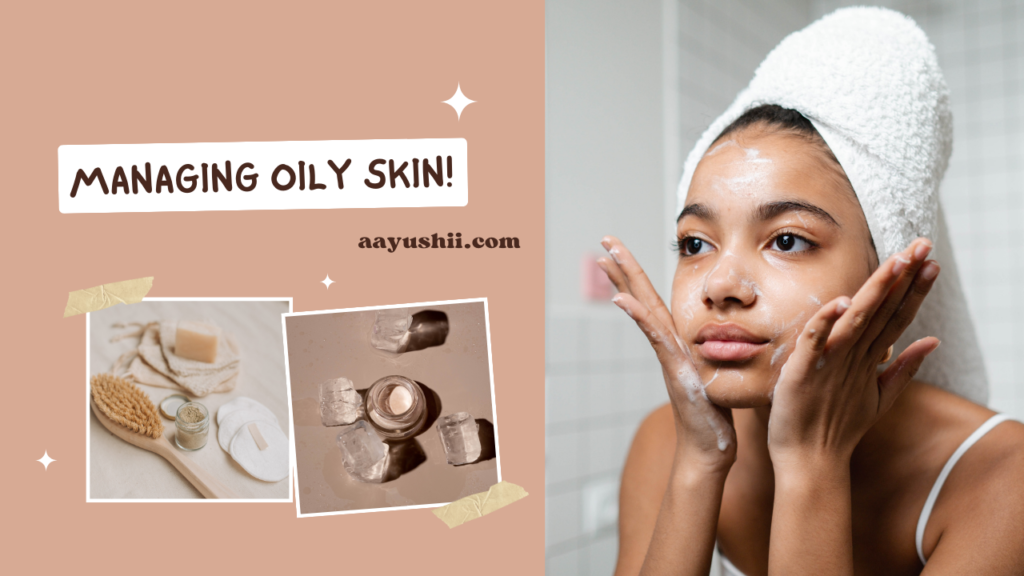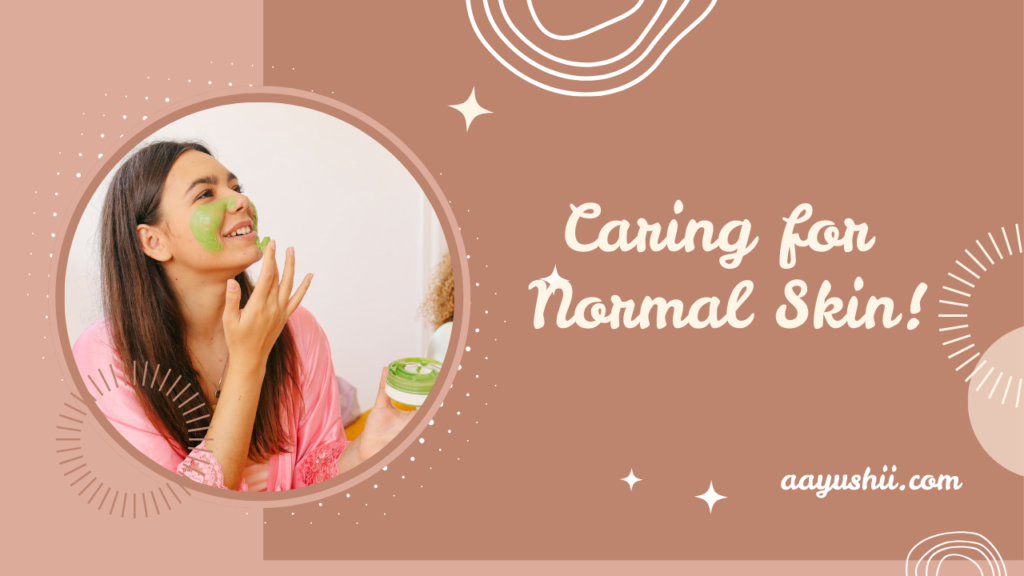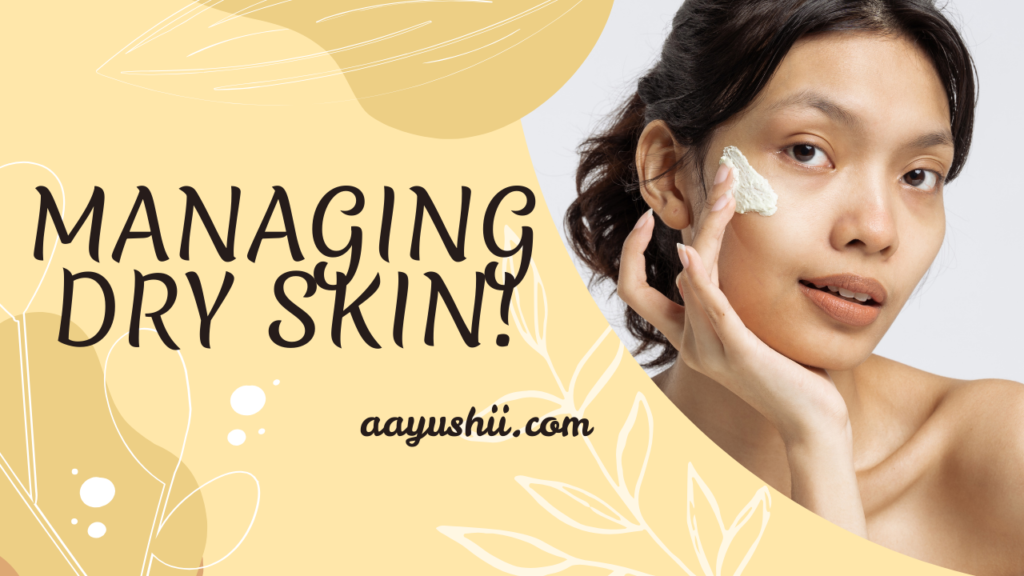Have you ever puzzled why a product that works wonders for someone else doesn’t seem to do much for you—or worse, causes breakouts or irritation? Your skin type typically holds the answer. Just like every person is unique, so is their skin. The cornerstone of excellent skincare is knowing your skin type, which enables you to select the appropriate products, create a productive regimen, and cater to the unique requirements of your skin.
Think of your skin as a living, breathing part of you (because it is!). It changes with the seasons, responds to what you eat, and reflects how well you care for it. Understanding your skin type is the first step, regardless of whether your objective is to reduce dryness, manage oil, or keep your skin radiant. This article will explain how to determine your skin type, how to take care of it, and common mistakes to avoid. No jargon, no fluff just practical tips to help you feel confident in your skin. Ready to give your skin the love it deserves? Let’s dive in!
Table of Contents
Understanding the Basics of Skincare
Skincare, at its core, is the practice of cleansing, protecting, and nourishing the skin to preserve its health and enhance its appearance. Since the skin is our largest organ, caring for it is about more than just aesthetics—good skincare also supports the skin’s natural barrier function, which protects our bodies from environmental stressors, bacteria, and other potential irritants.
The Skin’s Function and Structure
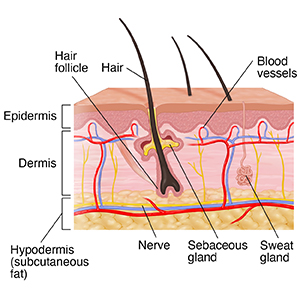
The skin has three primary layers:
Epidermis (Outer Layer)
- Acts as the primary barrier.
- Contains the pigment-producing cells (melanocytes) that determine skin tone.
- Constantly regenerates through cell turnover, shedding old cells and replacing them with new ones.
- Houses natural moisturizing factors (NMFs) that help maintain hydration.
Dermis (Middle Layer)
- Contains the structural components such as collagen and elastin that give skin its elasticity and firmness.
- Hosts hair follicles, sweat glands, and sebaceous (oil) glands.
- Contains blood vessels that deliver nutrients and oxygen to the skin.
- Houses nerve endings that enable the sensation of touch and temperature.
Hypodermis (Subcutaneous Layer)
- Composed primarily of fat cells that insulate the body and cushion internal organs.
- Acts as a shock absorber.
- Helps maintain body temperature.
A quality skincare routine supports these layers by providing hydration, nourishment, and protection from environmental aggressors like UV rays, pollution, and harsh climates.
Why Skincare is Essential
- Barrier Protection: When the skin’s barrier is intact, it efficiently seals in moisture and keeps irritants out. Skincare products can reinforce this barrier by delivering lipids, ceramides, and other supportive components.
- Preventive Care: A proactive approach can prevent or minimize many common skin issues, such as acne breakouts, premature wrinkles, and hyperpigmentation.
- Aesthetic and Psychological Well-Being: Healthy, radiant skin often correlates with higher self-esteem. Taking a few moments each day to care for your skin can also become a calming ritual that combats daily stress.
Why Understanding Your Skin Type is So Important
Imagine attempting to prepare a gourmet meal without knowing the ingredients; it’s a recipe for catastrophe. The same goes for your skincare routine. Without understanding your skin type, you’re effectively guessing what it requires, and incorrect assumptions might result in dryness, breakouts, irritation, or dullness.
Your skin type is similar to a map in that it directs you toward the appropriate products and practices that complement the inherent qualities of your skin. Once you are aware of your skin type, you will no longer purchase items based solely on popularity or recommendations from others. Instead, you’re creating a customized regimen that suits the particular requirements of your skin, which will save you frustration, money, and time.
The advantages extend beyond problem avoidance. Your skin may become its best self with the appropriate care, becoming more resilient, balanced, and healthy. Understanding your skin type is therefore not only crucial, but also empowering. It provides you with the self-assurance to take control of your skin and realize its greatest potential.
Let’s find out about skin types
Were you aware that there are five primary varieties of skin? Each one is unique and requires specialized care to maintain health and balance. The five skin types are normal, oily, dry, combination, and sensitive. Understanding which group your skin falls into is the first step toward developing a routine that works for you. Let’s break them down and find out what distinguishes each type!
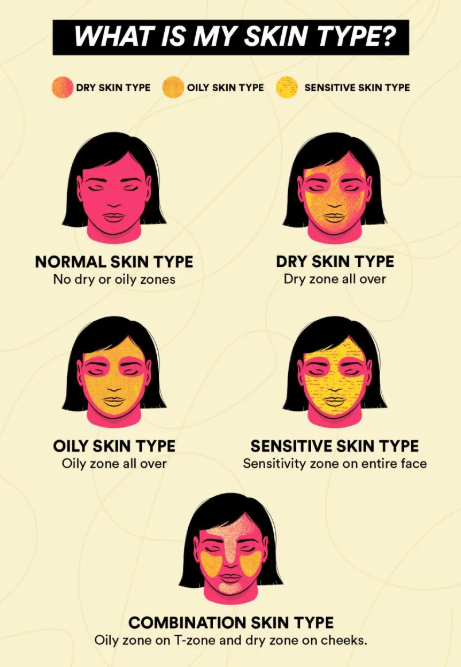
Common Skin Types and Their Characteristics
- Oily Skin
- Overactive sebaceous glands, leading to a shiny T-zone and possibly shiny cheeks.
- Prone to enlarged pores, blackheads, and whiteheads.
- May experience frequent breakouts due to excess oil.
- Dry Skin
- Underactive oil glands and poor moisture retention.
- Feels tight or rough, especially after cleansing.
- More prone to fine lines and wrinkles due to a lack of natural oils.
- Combination Skin
- Oily T-zone (forehead, nose, chin) and drier cheeks.
- Challenging to balance because some areas need oil control while others need moisture.
- Pores are larger in the T-zone and smaller on the cheeks.
- Sensitive Skin
- Easily irritated by new products, weather changes, or certain ingredients like fragrances or strong acids.
- May show redness, itching, or burning sensations.
- Can overlap with other skin types (e.g., oily-sensitive or dry-sensitive).
- Normal Skin
- Balanced in terms of oil production and hydration.
- Rare breakouts, less likely to be reactive or irritated.
- Still needs maintenance to prevent future issues like fine lines or hyperpigmentation.
Methods to Determine Your Skin Type
- Bare-Faced Method
- Cleanse your face with a mild cleanser, then wait one hour without applying any products.
- Note how your skin feels. Tightness or flaking suggests dryness, shine indicates oiliness, a mix of both can indicate combination skin, and no discomfort or excessive oil likely means normal skin.
- Blotting Sheet Method
- Press blotting paper on different parts of your face.
- If the sheet picks up oil from all over, you have oily skin; oil from only the T-zone implies combination; little to no oil suggests dry or normal skin.
By understanding your baseline skin type, you can select products more effectively. Always remember that skin type can shift with hormonal cycles, seasonal changes, and other lifestyle adjustments.
Why a Personalized Skincare Routine Matters
A customized routine isn’t just a trendy concept—your skin’s unique characteristics, environment, and even your daily habits can drastically influence how products interact with your skin.
Targeted Ingredient Benefits
- Salicylic Acid (BHA) for oily or acne-prone skin helps remove excess sebum and unclog pores.
- Hyaluronic Acid for dehydrated or dry skin provides deep hydration by attracting and retaining water molecules.
- Niacinamide supports a range of concerns: it can balance oil production in oily skin, reduce redness in sensitive skin, and strengthen the barrier for dry skin.
Avoiding Potential Irritants
By opting for a personalized routine, you can avoid ingredients you know your skin dislikes (e.g., certain fragrances, alcohol, or harsh chemicals), minimizing the risk of adverse reactions.
Cost-Effectiveness
Instead of trying every trendy serum on the market, personalization helps you target specific concerns. This prevents wasted money on products that don’t suit your skin’s needs.
Preventing Over- or Under-Treatment
Using intense anti-acne ingredients like benzoyl peroxide or high-percentage retinol on already dry or sensitive skin can lead to excessive irritation. Conversely, a mild formula might not be potent enough for more severe concerns. Personalization ensures you find that perfect balance.
Core Steps in Every Skincare Routine
While the specifics will vary by skin type, certain core steps remain foundational. Think of these steps as the scaffold upon which you can layer or remove more specialized products.
1. Cleansing
Why It’s Important: Throughout the day, your skin accumulates pollutants, dirt, sweat, and oil, which can clog pores and prevent other products from working effectively. A good cleanser sets the stage for the rest of your routine.
Choosing a Cleanser Based on Skin Type:
- Oily/Acne-Prone: Gel or foam cleanser, possibly with salicylic acid to help decongest pores.
- Dry/Sensitive: Cream or lotion-based cleansers that won’t strip natural oils.
- Combination: Gentle, pH-balanced cleansers that clear away dirt without overly drying certain areas.
Cleansing Best Practices:
- Wash with lukewarm water; hot water can exacerbate dryness or sensitivity.
- Use gentle, circular motions for at least 30–60 seconds to ensure thorough cleansing.
- Double cleanse if wearing heavy makeup or sunscreen—start with an oil-based cleanser, followed by a water-based cleanser for a deeper clean.
2. Toning
Why It’s Important:
Historically, toners were used to rebalance skin pH after using alkaline soaps. Modern cleansers are generally pH-balanced, so toners today offer additional benefits such as exfoliation, hydration, and antioxidant support.
Toner Varieties:
- Hydrating Toners: Contain ingredients like hyaluronic acid or glycerin to infuse your skin with moisture.
- Exfoliating Toners: Feature alpha hydroxy acids (AHAs) like glycolic or lactic acid, or beta hydroxy acid (BHA) like salicylic acid to gently remove dead skin cells and unclog pores.
- Balancing Toners: Aim to maintain an optimal pH while providing mild hydration or soothing benefits.
How to Apply:
- Use a cotton pad or clean hands to pat the toner onto your face.
- Wait about a minute for it to absorb before moving to the next step.
3. Targeted Treatments (Serums, Spot Treatments, and More)
Why They’re Important:
Serums and spot treatments contain higher concentrations of active ingredients designed to penetrate deeper, targeting issues like acne, hyperpigmentation, or wrinkles.
Common Targeted Treatments:
- Serums: Lightweight products packed with active ingredients such as Vitamin C (for brightening and antioxidant protection), niacinamide (for oil regulation and brightening), or peptides (for firming).
- Spot Treatments: Typically come in gels, creams, or lotions containing benzoyl peroxide, sulfur, or salicylic acid to help reduce active breakouts or fade dark spots.
- Ampoules/Boosters: Often used in short, intensive “skin bootcamp” regimens to address a specific concern.
Layering:
- Apply serums in order of lightest to heaviest texture.
- Allow 1–2 minutes for each layer to absorb before adding another product to avoid pilling or reduced efficacy.
4. Moisturizing
Why It’s Important:
Moisturizers seal in hydration, maintain the skin’s barrier, and prevent transepidermal water loss (TEWL). Even oily skin benefits from a moisturizer to keep oil production in check.
Moisturizer Types:
- Gel: Lightweight and quick-absorbing; ideal for oily or combination skin.
- Lotion or Emulsion: Slightly thicker but still lighter than creams; good for normal or combination skin.
- Cream or Balm: Richest formula, suitable for dry or mature skin.
- Ingredients to Note:
- Humectants (like hyaluronic acid) draw in moisture.
- Emollients (like squalane, shea butter) soften skin texture.
- Occlusives (like petrolatum or silicone) help trap moisture inside.
5. Sun Protection (SPF)
Why It’s Vital:
Sun damage is a primary contributor to skin aging, hyperpigmentation, and can increase the risk of skin cancer. Daily sunscreen use (even when cloudy) is one of the best steps you can take for long-term skin health.
SPF Fundamentals:
- Broad-Spectrum: Shields against both UVA (associated with aging) and UVB (associated with burning) rays.
- SPF 30 or Higher: Offers adequate daily protection for most people.
- Reapplication: Essential if you’re outdoors, sweating, or swimming—about every two hours.
Types of Sunscreen:
- Chemical Sunscreen: Absorbs UV rays. Generally lighter in texture but can irritate sensitive skin.
- Mineral (Physical) Sunscreen: Sits on top of the skin to reflect UV rays; good for sensitive skin but may leave a white cast if not well-formulated.
6. Optional Steps
These steps aren’t mandatory but can elevate your skincare game and address specific concerns:
- Eye Cream: Formulated with peptides, caffeine, or hyaluronic acid to manage under-eye puffiness, wrinkles, or dark circles.
- Exfoliation: Chemical (AHA, BHA, PHA) or physical (scrubs) to remove dead skin cells. Generally 1–3 times per week, depending on skin tolerance.
- Masks: Can be hydrating (sheet masks, sleeping masks) or purifying (clay masks). Use weekly or as needed.
- Essences: A Korean skincare staple; lightweight fluids that hydrate and prep your skin for subsequent products.
Normal Skin: The Balanced Beauty
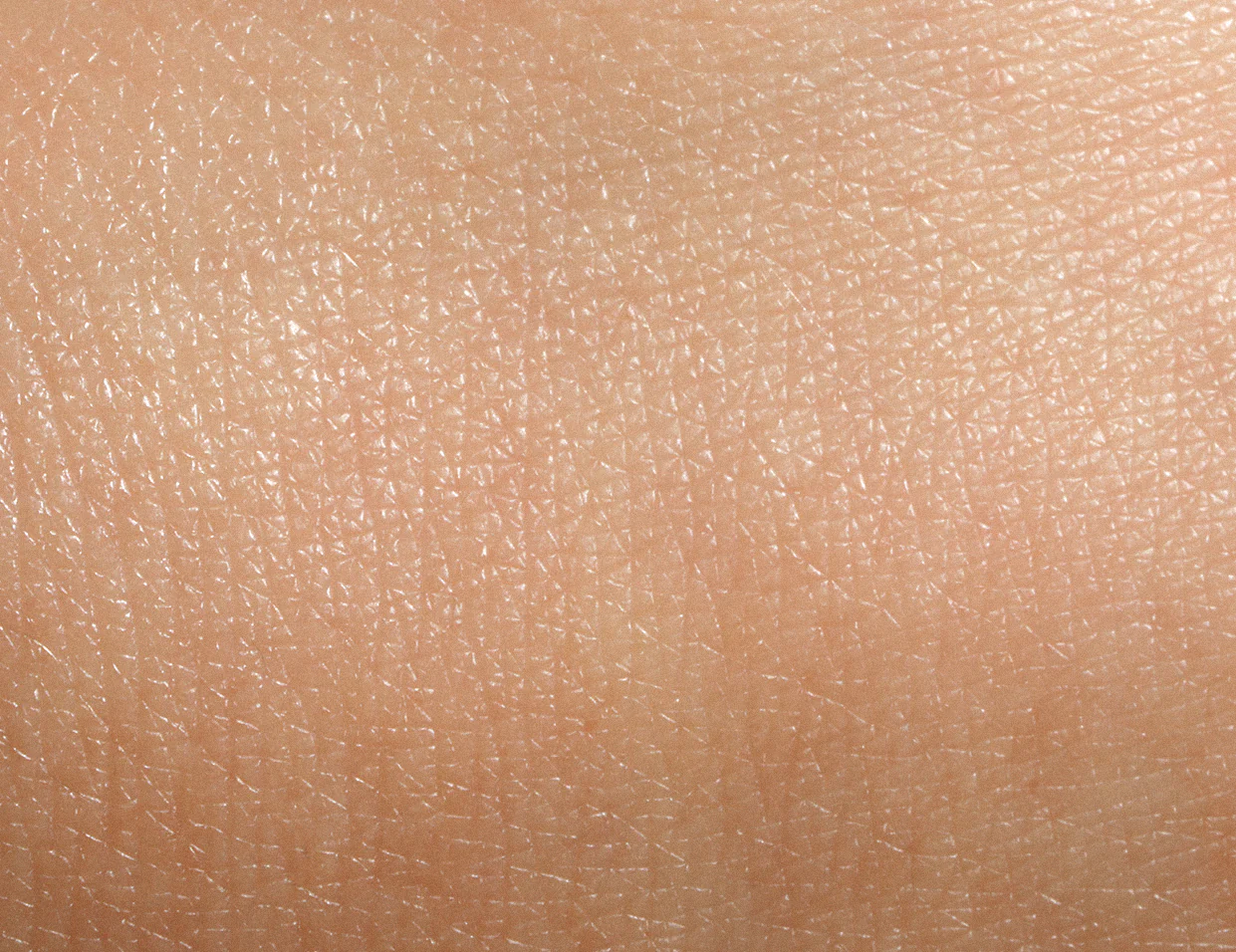
Let’s talk about normal skin, which we all secretly envy! It’s like the Goldilocks of skin type. Normal skin is often considered the “ideal” skin type because it strikes a perfect balance between oily and dry. Normal skin does not have extreme characteristics, unlike oily, dry, or combination skin, making it relatively easy to care for. It means your skin naturally manages its oil production and moisture levels, resulting in the smooth and even texture we all adore. It has the least problematic skin type, but that does not imply it is immune to winter dryness or stress breakouts.
How to figure out if you have normal skin
- Balanced Moisture Levels: Normal skin has an even amount of moisture, not too dry or greasy. It feels soft, smooth, and comfortable throughout the day.
- Even Tone: The complexion tends to be free of visible blemishes, redness, or irritation, giving the skin a natural glow.
- No Excess Oil: Unlike oily skin, normal skin doesn’t produce excess oil that causes shine, especially around the T-zone (forehead, nose, and chin).
- Minimal Pore Visibility: Pores are usually small and not easily noticeable, contributing to the skin’s smooth appearance.
- Soft Texture: Normal skin feels soft to the touch, with a smooth texture that doesn’t feel rough or dry.
How to care for normal skin.
Even though your skin doesn’t give you much trouble, it still needs love and attention to stay in top shape. Here’s how to keep that natural glow going strong.
- Cleanse Gently: Stick to a mild, hydrating cleanser that removes dirt and impurities without disrupting your skin’s balance. Over-cleansing can strip your skin of its natural oils, even if it’s balanced. (Pro tip: Avoid harsh cleansers or those with high levels of alcohol; they can dry out your skin over time.)
- Moisturize Daily: Even normal skin needs hydration. Opt for a lightweight moisturizer that keeps your skin soft without feeling greasy. Look for ingredients like glycerin or hyaluronic acid for a hydration boost.
- Don’t skip sunscreens: Normal skin still needs protection from harmful UV rays. Use a broad-spectrum sunscreen with SPF 30 or higher every day to prevent premature ageing and sun damage. Sunscreen isn’t just for sunny days apply it even when it’s not sunny.
- Exfoliate Occasionally: Your skin naturally sheds dead cells, but a gentle exfoliation once a week can help keep your skin smooth and radiant. Use a mild scrub or a chemical exfoliant with ingredients like lactic acid.
- Hydrate From Within: Drink plenty of water and eat a diet rich in fruits, vegetables, and healthy fats to keep your skin glowing from the inside out.
- Pamper It Weekly: Treat yourself to a hydrating or soothing face mask once a week. Think of it as a little spa moment for your skin.
Common challenges for normal skin
While normal skin is relatively low-maintenance, it’s not invincible. Let’s focus on a few challenges normal skin people might face:
- Seasonal Changes: Normal skin can feel drier in winter or oilier in summer. Adjust your products based on the season.
- Aging: As you age, your skin may lean toward dryness or develop fine lines. Start incorporating an anti-aging serum or cream in your late 20s or early 30s.
- Neglect: Just because your skin behaves doesn’t mean you can skip the basics. Without proper care, even normal skin can become dull or unbalanced.
Products to Look For
When shopping for skincare, look for products that maintain your skin’s balance without overwhelming it. Here are some key ingredients to keep an eye on:
- Hydrating Heroes: Hyaluronic acid, glycerin, aloe vera.
- Antioxidants: Vitamin C, green tea extract, or niacinamide to protect against environmental damage.
- Gentle Cleansers: Look for sulfate-free, pH-balanced options.
Why You’re Lucky to Have Normal Skin
Let’s not sugarcoat this. You’ve won the skin lottery! Normal skin is resilient and versatile, making it easier to experiment with different products and routines without much risk. But just like anything precious, it needs care and consistency to stay that way. Think of your skin as your best accessory—it deserves to shine!
So, keep up the good work, and don’t take your balanced beauty for granted. With a little effort, your skin will stay as radiant and flawless as ever!
Oily Skin: The Glow Getter
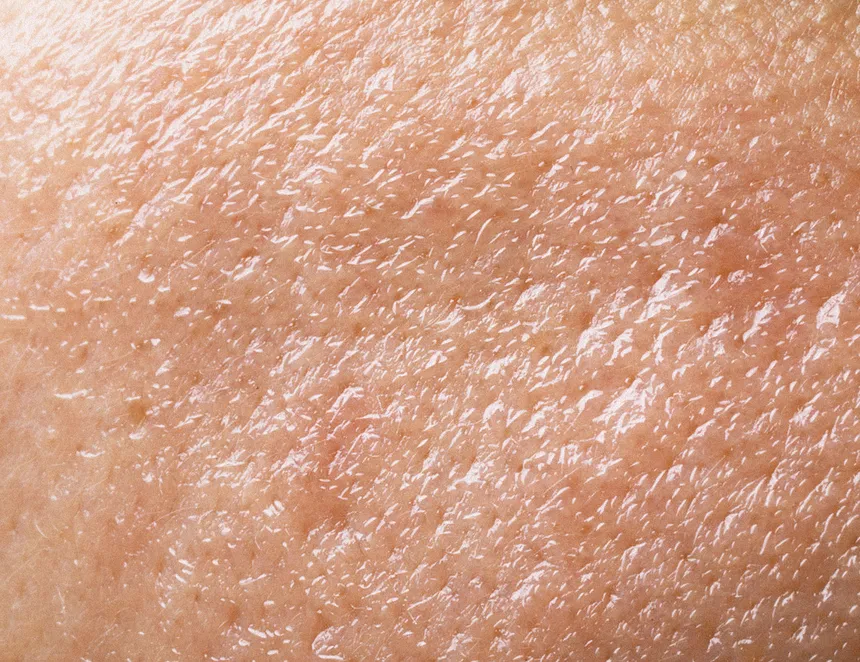
Oily skin has a terrible reputation, but let’s be clear: it’s not all bad! Sure, there are some drawbacks, such as the midday shine and the occasional breakout, but oily skin also has advantages. That natural oil (also known as sebum) nourishes your skin and reduces indications of ageing such as wrinkles. Oily skin occurs when your sebaceous glands overproduce sebum. While this natural oil benefits your skin’s health, using too much can clog pores, cause breakouts, and leave your face glossy. What’s the trick? Learning how to regulate oil without depleting your skin’s natural nutrients. Let’s go into all you need to know about oily skin and how to care for it like a pro!
How to figure out if you have oily skin
Not sure if your skin falls into the oily category? Here are the telltale signs.
- Shiny Appearance: The most noticeable feature of oily skin is the constant shine, particularly in the T-zone (forehead, nose, and chin). This is due to excess sebum that coats the skin’s surface.
- Enlarged Pores: Oily skin often has larger, more visible pores, especially on the nose and cheeks, as the excess oil stretches the pore walls.
- Frequent Breakouts: Excess oil can mix with dead skin cells and clog pores, leading to the formation of blackheads, whiteheads, and acne.
- Thick, Coarse Texture: Oily skin may feel thick or heavier than other skin types. It might also be more prone to uneven texture or rough patches.
- Tendency to Get Dull: Despite the shine, oily skin can sometimes appear dull, especially if the excess oil leads to buildup of dead skin cells or other impurities on the surface.
If this sounds like your skin, welcome to the oily skin club; you’re not alone!
Causes of Oily Skin
The overproduction of sebum that leads to oily skin can stem from several factors. These include both external and internal influences, and understanding these causes is key to managing the condition effectively:
- Genetics: If oily skin runs in your family, you’re more likely to experience it yourself. Genetics play a significant role in how much oil your sebaceous glands produce.
- Hormonal Changes: Hormones are one of the most common triggers for oily skin. Changes during puberty, pregnancy, menstruation, or even menopause can increase oil production. Hormonal imbalances, such as those caused by stress, can also cause the skin to become oilier.
- Diet and Lifestyle: A diet rich in greasy or fried foods, sugary snacks, and dairy products can sometimes contribute to oily skin. Additionally, high levels of stress or lack of sleep may trigger oil production.
- Climate and Weather: Hot, humid climates can lead to increased sebum production. Excessive sweating in warmer weather can also mix with oil, leading to clogged pores.
- Over-cleansing or Harsh Skincare Products: Ironically, using harsh cleansers or scrubbing your face too often can strip the skin of its natural moisture. This can trigger the sebaceous glands to produce even more oil to compensate for the dryness, leading to more oil on the skin’s surface.
- Medications: Certain medications, especially hormonal treatments or steroids, can increase oil production, leading to oily skin.
How to care for oily skin
The key to managing oily skin is balance. You want to control the excess oil without over-drying your skin, which can actually make your skin produce more oil as a defense mechanism.
- Cleanse Twice a Day: Use a gentle foaming or gel-based cleanser to remove dirt, oil, and makeup without stripping your skin. Look for ingredients like salicylic acid or tea tree oil, which help control oil and prevent clogged pores. Avoid harsh, overly drying cleansers—they’ll only make your skin produce more oil to compensate. (Pro Tip: Never skip your nighttime cleanse! Removing oil and dirt before bed prevents clogged pores and breakouts.)
- Exfoliate Regularly: Exfoliation is your best friend for keeping pores clear. Use a chemical exfoliant like salicylic acid or glycolic acid 2-3 times a week. Skip the harsh scrubs—they can irritate your skin and cause more oil production.
- Hydrate, Don’t Skip Moisturizer: Many people with oily skin think they can skip moisturizer—big mistake! Depriving your skin of hydration can trigger even more oil production. Opt for lightweight, oil-free, or gel-based moisturizers that hydrate without feeling greasy.
- Blot Away Shine: Keep blotting papers in your bag to soak up excess oil during the day without messing up your makeup. They’re a lifesaver for that midday shine!
- Use Non-Comedogenic Products: Choose products labeled as “non-comedogenic,” meaning they won’t clog your pores. This applies to makeup, sunscreen, and skincare.
- Incorporate Oil-Controlling Ingredients: Look for products with mattifying ingredients like niacinamide, clay, or witch hazel to keep oil at bay. For targeted care, clay masks work wonders for absorbing excess oil—use them 1-2 times a week.
- Don’t Overdo It: Less is more when it comes to oily skin. Over-cleansing or over-exfoliating can irritate your skin and make oil production worse. Stick to a balanced routine.
Common Challenges for Oily Skin
While oily skin has some advantages, it is not without drawbacks. Here are some frequent issues that you might face.
- Acne and Breakouts: Excess oil can trap dirt and dead skin cells in your pores, leading to blackheads, whiteheads, and acne.
- Shiny Appearance: The persistent shine can make you feel self-conscious, especially in photos or under bright lights.
- Makeup Longevity: Keeping makeup in place can feel like a losing battle, especially in humid weather.
Benefits of Oily Skin
Yes, oily skin has perks! This is why you should embrace it.
- Natural Moisturizer: Your skin stays hydrated naturally, reducing the risk of dryness and flakiness.
- Anti-Aging Superpower: Oily skin is less prone to fine lines and wrinkles, so you may age more gracefully than dry-skinned people.
- Glowing Complexion: That natural shine may give you a dewy, youthful glow—no highlighter required!
Products to Look For
When shopping for products, search for these potent components that help keep oil in check.
- Salicylic Acid: Penetrates deep into pores to clear out oil and prevent breakouts.
- Niacinamide: Balances oil production while calming redness and irritation.
- Clay: Absorbs excess oil and detoxifies the skin.
- Tea Tree Oil: A natural antibacterial that helps fight acne.
- Witch Hazel: Tightens pores and reduces oil without drying out your skin.
The Beauty of Oily Skin
Despite its peculiarities, oily skin is durable and youthful. Oily skin can be beautiful for several scientific reasons, primarily due to the protective benefits it offers. Sebum, the natural oil produced by the sebaceous glands, acts as a barrier that helps to protect the skin from environmental stressors like pollution, UV rays, and bacteria. This oil keeps the skin hydrated, preventing it from becoming dry or dehydrated, which is crucial for maintaining a healthy, youthful appearance.
Research also shows that sebum has antioxidant properties, which can help fight the oxidative stress caused by free radicals. This means oily skin may be better equipped to delay signs of aging, such as wrinkles and fine lines, because the sebum can neutralize damaging effects from the sun and other environmental factors. Additionally, oily skin tends to have a more balanced texture, and when cared for properly, it can appear smooth and supple, with a natural glow.
In short, oily skin is not a flaw but rather a form of natural protection, making it resilient, healthier-looking, and better at defending itself against the elements, which can ultimately lead to beautiful skin over time.
Combination Skin: The Balancing Act
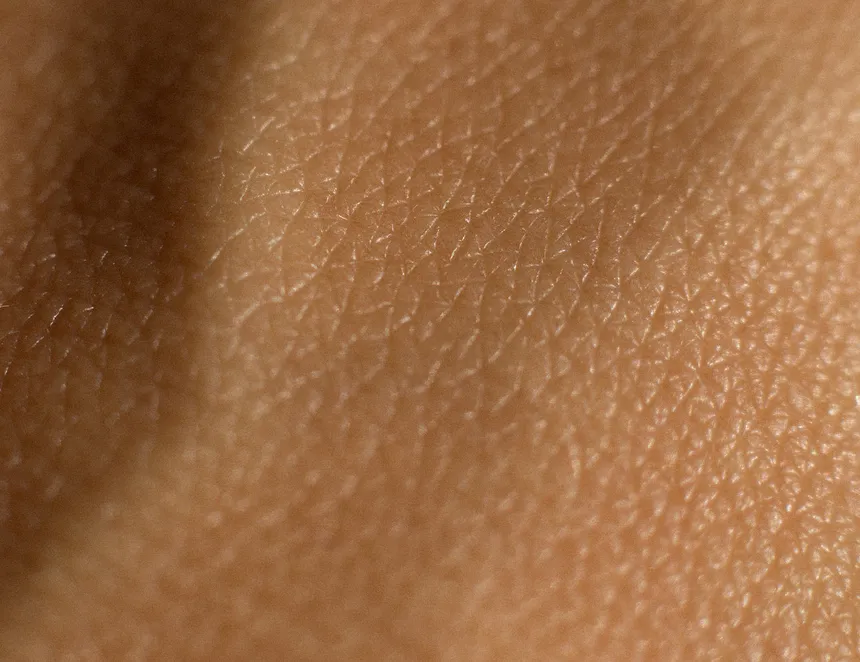
Combination skin is one of the most common and challenging skin type to manage. Combination skin is like having two personalities in one; it is dry in some areas and oily in others. It’s a little unpredictable, and figuring out how to care for it can feel like solving a puzzle. It often presents itself as oily in certain areas (typically the T-zone—forehead, nose, and chin) and dry or normal in others (like the cheeks and around the eyes). This dual nature can make finding the right products and treatments a bit tricky, but with the right approach, you can create a skincare routine that balances both your oily and dry areas.
Combination skin is characterized by an uneven distribution of oil and moisture across the face. Some parts may produce excess sebum, while others may feel tight, flaky, or dry. It’s important to note that combination skin is not a skin condition but a skin type, and it can change over time due to factors such as age, seasons, or changes in your skincare routine.
How to figure out if you have combination skin
- Oily T-zone: The forehead, nose, and chin tend to be oilier, leading to visible shine and potentially clogged pores or breakouts in these areas.
- Dry or Normal Cheeks: The areas around the cheeks, eyes, and jawline are often drier, leading to rough patches, flaking, or a feeling of tightness.
- Prone to Breakouts in the T-zone: While the cheeks may be clear, the oilier T-zone can be more prone to blackheads, whiteheads, or pimples due to the excess oil.
- Visible Pores: Pores are larger and more noticeable in oily areas but barely visible elsewhere.
- Seasonal Swings: The balance between oil and dryness can shift based on the season, climate, or lifestyle factors. For example, combination skin may be oilier in summer and drier in winter.
- Makeup Issues: Your makeup melts off in the T-zone but looks patchy or cakey in dry areas.
Causes of combination skin
The causes of combination are relatively similar to oily skin. It is influenced by genetics, hormonal changes, climate, over-cleansing, age, and diet. Genetics can lead to a mix of oily and dry areas, while hormonal changes can cause increased oil production in the T-zone. Climate and weather can also affect combination skin, with hot, humid climates exacerbating oiliness and cold, dry winters making dry areas more dehydrated. Over-cleansing or harsh skincare can strip the skin of natural oils.
How to care for combination skin
The golden rule for combination skin is balancing both dry and oily areas of your skin. Your goal is to address the oily areas without drying out the dry zones and vice versa. Here’s how to create a routine that works.
- Choose a Gentle Cleanser: Use a mild, pH-balanced cleanser to remove dirt and oil without stripping your skin. Look for gel or foam cleansers that target oil but don’t dry out the rest of your face. Avoid harsh cleansers that leave your dry areas feeling tight and uncomfortable. (Pro Tip: Double cleanse at night to remove makeup and sunscreen effectively, especially in oily areas.)
- Multitask with Moisturizers: Use a lightweight, oil-free moisturizer on your T-zone to keep it hydrated without adding shine. For dry areas, layer on a richer cream to provide extra nourishment. (Pro Tip: If one moisturizer doesn’t do the trick, don’t hesitate to use two different ones for targeted care.)
- Exfoliate Regularly: Exfoliate 2-3 times a week to remove dead skin cells and prevent clogged pores in oily areas. Choose a chemical exfoliant like salicylic acid for the T-zone and a gentler exfoliant like lactic acid for dry patches.
- Use a Balancing Toner: Look for a toner with ingredients like niacinamide or witch hazel to control oil in the T-zone and calm dry areas.
- Try Multi-masking: Apply a clay mask to oily areas like your T-zone to absorb excess oil and unclog pores. Use a hydrating or soothing mask on dry areas to boost moisture. (Pro Tip: Multi-masking is the ultimate self-care; it’s like a spa day customized for your skin!)
- Never Skip Sunscreen: Protecting your skin from UV damage is non-negotiable. Opt for a lightweight, non-comedogenic sunscreen that won’t clog your pores or add shine.
- Adjust for the Seasons: In summer, focus on oil control with lighter products. In winter, double down on hydration with richer creams or hydrating serums.
- Hydrate without Overloading: Keep your skin hydrated by using a lightweight, oil-free moisturizer for the T-zone and a richer cream for the drier areas. Look for products that are non-comedogenic, meaning they won’t clog your pores or contribute to breakouts.
- Blotting Papers: Carry blotting papers for quick fixes throughout the day. These can help remove excess oil from your T-zone without disturbing your makeup or skin’s natural balance.
Common Challenges for Combination Skin
Combination skin has its perks, but it’s not without its struggles. Here are some common challenges and how to tackle them:
- Unpredictability: Your skin might act oily one day and dry the next. Stay flexible and adjust your routine as needed.
- Product Overload: Finding products that work for both zones can be tricky. Experiment with targeted treatments or dual routines.
- Breakouts: The T-zone’s oiliness can lead to blackheads and acne. Keep this area clean and exfoliated to prevent clogged pores.
- Dryness in Some Areas: Dry patches can make makeup look uneven or flaky. Use a hydrating primer or a touch of moisturizer before applying makeup to dry spots.
Benefits of Combination Skin
While it can feel like a lot to handle, combination skin has its advantages:
- Versatility: You get to mix and match products for a truly customized skincare routine.
- Balanced Potential: With the right care, combination skin can look incredibly healthy and radiant.
- Seasonal Adaptability: Your skin’s dual nature means it’s resilient and adaptable to changing weather.
Products to Look For
When shopping for skincare, look for ingredients that balance oil and hydrate dry areas:
- Niacinamide: Controls oil production while calming redness and irritation.
- Hyaluronic Acid: Adds hydration without heaviness, perfect for dry areas.
- Salicylic Acid: Helps unclog pores and manage oiliness in the T-zone.
- Aloe Vera: Soothes and hydrates without making your skin greasy.
- Green Tea Extract: A natural antioxidant that balances and protects your skin.
Why Combination Skin is Unique
Combination skin is like a little challenge wrapped in beauty. It is unique because it can balance both oily and dry areas, which allows it to function optimally in different conditions. Scientifically, this skin type produces sebum (oil) in the T-zone, which helps protect the skin and retain moisture, while the drier areas (like the cheeks) are more prone to dehydration. This natural balance means combination skin can resist excess oil build-up while maintaining hydration, making it less prone to extreme dryness or breakouts. Studies show that this adaptability helps combination skin stay healthy, clear, and resilient, making it versatile and less likely to overreact to environmental changes.
Dry Skin: The Thirsty Queen
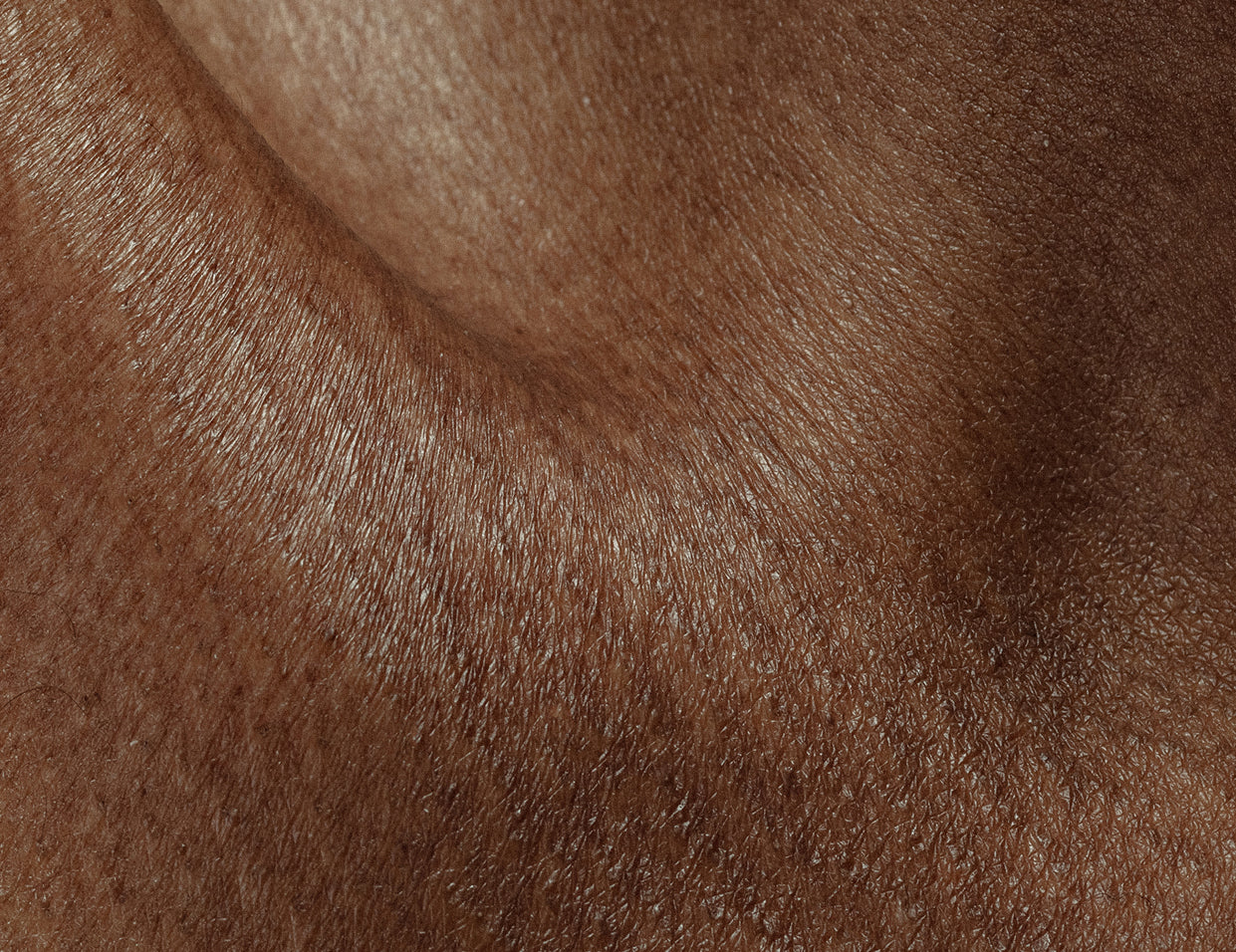
If your skin feels tight, flaky, or as if it’s begging for a drink, chances are you have dry skin. While it might sound like a challenge, dry skin has its delicate charm think soft, smooth, and glowing when it’s well-cared for. The key is nourishment and hydration. Let’s dive deep into understanding dry skin and how to pamper it so it can thrive.
Dry skin is skin that doesn’t produce enough natural oils (sebum) or struggles to retain moisture. This lack of hydration leads to tightness, roughness, and sometimes an almost papery feel. While it can happen to anyone, dry skin is often genetic but can also be influenced by weather, age, and lifestyle.
How to figure out if you have dry skin
- Tightness: Your skin feels stretched or tight, especially after cleansing.
- Rough Texture: It feels rough to the touch, especially around the cheeks and jawline.
- Flakiness: You notice patches of peeling or flaking, particularly in cold weather.
- Dull Appearance: Your skin lacks that natural glow and can sometimes appear ashy.
- Itchiness: Dryness can lead to irritation and an annoying itch, especially in extreme conditions.
- Fine Lines: Wrinkles and fine lines may appear more pronounced because of the lack of hydration.
- Redness or Irritation: Skin can become inflamed or red, especially if it is prone to sensitivity.
- Cracks or Fissures: In severe cases, extremely dry skin can crack or form painful fissures, making it more vulnerable to infections.
If you identify with these, your skin is certainly dry and in need of serious attention!
Causes of dry skin
Several factors can contribute to dry skin, some of which are temporary while others may be chronic. Understanding the cause of your dry skin is essential in determining the best approach for treatment.
- Environmental Factors: Harsh weather conditions, particularly cold, dry air, or hot indoor heating, can strip your skin of its natural moisture. Low humidity in winter months is a common culprit.
- Hot Showers and Baths: While a long, hot shower can feel comforting, hot water strips your skin of essential oils, leading to dryness and irritation.
- Harsh Skincare Products: Cleansers or exfoliants with alcohol, fragrances, or other harsh ingredients can damage the skin’s moisture barrier, causing dryness.
- Aging: As we age, our skin produces less oil and retains moisture less effectively. This leads to naturally drier skin.
- Medical Conditions: Certain conditions like eczema, psoriasis, hypothyroidism, or diabetes can cause chronic dry skin.
- Dehydration: Not drinking enough water or having a poor diet can affect your skin’s hydration, leading to a dull and dry appearance.
How to care for dry skin
Caring for dry skin is all about giving it the moisture and nourishment it craves. The goal is to replenish hydration, repair your skin’s barrier, and protect it from further dryness. Here’s how:
- Choose a Gentle Cleanser: Use a hydrating, creamy cleanser that removes dirt without stripping away your skin’s natural oils. Avoid harsh soaps that can strip your skin’s natural oils. Avoid foaming cleansers or those with harsh surfactants—they can make dryness worse. (Pro Tip: Look for ingredients like ceramides or glycerin in your cleanser to help retain moisture.)
- Moisturize Immediately After Cleansing: Apply a rich, nourishing moisturizer while your skin is still damp to lock in hydration. Look for moisturizers with ingredients like hyaluronic acid, glycerin, ceramides, shea butter, or squalane for deep hydration. (Pro Tip: Don’t skip your moisturizer, even if your skin feels better after a few days of care. Consistency is key!)
- Add Hydrating Layers: Use a hydrating serum before your moisturizer for an extra boost of moisture. Ingredients like hyaluronic acid and niacinamide are your best friends. For very dry skin, consider a facial oil as the final layer to seal in hydration.
- Exfoliate Gently: Dry skin still needs exfoliation to remove dead skin cells but go gentle. Use a mild chemical exfoliant like lactic acid once or twice a week. Avoid gritty scrubs, they can damage your already delicate skin.
- Protect with Sunscreen: Dry skin is more vulnerable to environmental damage, thus sunscreen is essential. Use a broad-spectrum SPF with hydrating every day, whether the weather is sunny or cloudy.
- Hydrate: Drinking plenty of water throughout the day can help improve the overall hydration of your skin. Don’t forget to eat foods rich in omega-3 fatty acids (like salmon, walnuts, and flax seeds), which can help support skin’s moisture retention.
- Avoid Hot Water: While it may feel soothing, hot water can further dry out your skin. Opt for lukewarm water for both showers and washing your face.
- Humidify Your Space: Invest in a humidifier for your home, especially during winter or in dry climates. It helps maintain moisture levels in the air and your skin.
- Protect Your Skin from the Elements: When going out in the cold or windy weather, wear protective clothing and apply a barrier cream or ointment to shield your skin. This helps prevent moisture loss and shields against environmental damage.
Common Challenges for Dry Skin
While dry skin has its own beauty, it’s not without its struggles. Here’s what dry skin people might face and how to handle it:
- Seasonal Dryness: Winter can make dry skin worse. Switch to richer creams during colder months.
- Irritation: Dry skin can be prone to redness and irritation, especially with harsh products. Stick to soothing and fragrance-free formulas.
- Makeup Issues: Foundation can cling to dry patches, making your skin look uneven. Use a hydrating primer and opt for cream-based makeup products.
Benefits of Dry Skin
- Less Acne: Dry skin typically produces less oil, which means fewer clogged pores and breakouts.
- Elegant Aging: With the right care, dry skin can age gracefully, often looking refined and smooth.
- Soft Texture: When well-nourished, dry skin has a lovely, velvety texture that feels luxurious.
Products to Look For
When shopping for products, look for these hydration heroes:
- Hyaluronic Acid: Attracts water to the skin, plumping and hydrating.
- Ceramides: Help repair and strengthen the skin’s barrier.
- Shea Butter: Provides intense moisture and soothes dry areas.
- Squalane: Mimics natural skin oils for lightweight hydration.
- Aloe Vera: Soothes and calms irritation while providing hydration.
Why Dry Skin is Special
Dry skin is special because it has a distinct barrier that, when cared for properly, can be incredibly resilient and sensitive to environmental changes. Scientifically, dry skin lacks sufficient moisture in the outermost layer, which makes it prone to dehydration. However, this can actually be an advantage.
Dry skin is less likely to suffer from acne or excessive oil buildup because it produces fewer oils (sebum), which helps prevent clogged pores. Moreover, dry skin tends to age more slowly than oily skin since it’s less prone to developing deep acne scars and wrinkles. With proper hydration and care, dry skin can have a smooth, velvety texture and a radiant, youthful glow. Its uniqueness lies in the need for thoughtful moisturizing, which can result in a softer, more refined complexion when given the right attention.
Sensitive Skin: The Gentle Beauty
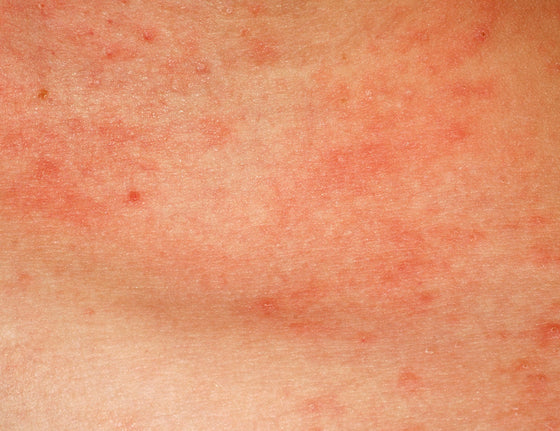
Sensitive skin is like a delicate flower—it’s beautiful but needs extra care and attention. If your skin reacts to the smallest changes, feels irritated easily, or throws a tantrum over new products, it’s safe to say you’ve got sensitive skin. Sensitive skin is a common yet often misunderstood condition that affects people of all ages and skin types. While many assume sensitive skin simply means redness or irritation, it can manifest in several different ways, ranging from a mild reaction to a full-blown skin flare-up.
Sensitive skin requires special attention, as it reacts more easily to various factors, both external and internal. The good news is that with the right approach, you can manage sensitive skin and keep it comfortable, calm, and healthy.
Sensitive skin is less about a skin type (like oily or dry) and more about how your skin reacts to its environment, products, and triggers. It tends to be more prone to irritation, redness, and discomfort than other skin types. People with sensitive skin often find their skin reacts to things like fragrances, harsh chemicals, weather changes, or even stress.
How to figure out if you have sensitive skin
If your skin is temperamental, you might fall into the sensitive skin category.
- Redness or Flushing: Sensitive skin often turns red due to external irritants, such as extreme temperatures, spicy foods, or alcohol. Flushing can occur, especially on the cheeks and nose.
- Itching or Stinging: Sensitive skin can react with a sensation of itching, burning, or stinging, especially when using certain skincare products or when exposed to allergens.
- Prone to Inflammation: Rashes, hives, or other forms of inflammation can develop when sensitive skin reacts to triggers. The skin may feel hot or swollen.
- Dry Patches: Sensitive skin often develops flaky or rough patches, especially after exposure to triggers.
- Breakouts or Bumps: While not the same as acne, sensitive skin can break out in small, red bumps or pustules, especially in reaction to irritation or allergens.
- Visible Blood Vessels: Your skin may show tiny red lines (capillaries) due to its thin or delicate nature.
- Allergic Reactions: You experience frequent reactions like hives or rashes when trying new products.
Causes of Sensitive Skin
- Genetics: Some people are simply born with sensitive skin, which can be inherited from their parents. If you have a family history of conditions like eczema, rosacea, or allergic reactions, you may be more likely to have sensitive skin.
- Skin Conditions: Conditions like eczema, rosacea, and psoriasis can cause heightened skin sensitivity. These conditions often lead to inflammation, redness, and irritation, making the skin more reactive to everyday factors.
- Environmental Factors: Harsh environmental conditions such as extreme cold or heat, low humidity, or strong winds can strip the skin’s natural barrier and increase sensitivity. Pollution and UV exposure can also damage the skin, leading to irritation.
- Harsh Skincare Products: Some ingredients commonly found in skincare products, such as alcohol, fragrances, artificial dyes, and strong exfoliants, can be too harsh for sensitive skin. These ingredients can damage the skin’s barrier, leading to increased sensitivity.
- Hormonal Fluctuations: Hormonal changes that occur during pregnancy, menstruation, or menopause can affect the skin’s sensitivity. During these times, the skin may become more reactive, leading to increased irritation or breakouts.
- Dietary Factors: Certain foods, such as spicy foods, citrus, or alcohol, can exacerbate skin sensitivity. Additionally, food allergies or intolerances may contribute to skin flare-ups.
- Stress and Lifestyle Factors: Chronic stress and lack of sleep can weaken the skin’s barrier, making it more susceptible to irritation. Smoking and dehydration also contribute to sensitive skin.
How to Care for Sensitive Skin
Sensitive skin thrives on minimalism. The simpler your routine, the better. Focus on calming, hydrating, and protecting your skin with gentle products that don’t irritate. Here’s how to pamper your sensitive skin:
- Use Gentle, Fragrance-Free Products: Fragrance and alcohol-based products can be irritating to sensitive skin. Always opt for fragrance-free, alcohol-free,creamy, or milky cleanser products, that are designed specifically for sensitive skin. Avoid harsh soaps, foaming cleansers, or anything with strong surfactants like sodium lauryl sulfate. Look for ingredients like hyaluronic acid, ceramides, aloe vera and glycerin, which help soothe and hydrate the skin without irritating it. (Pro Tip: Use lukewarm water—not hot or cold—to prevent irritation while cleansing.)
- Opt for a Soothing Cleanser: Choose a mild, hydrating cleanser that won’t strip your skin of its natural oils. Cream-based cleansers or oil cleansers are usually best for sensitive skin, as they are gentle yet effective in removing dirt and impurities without causing dryness or irritation.
- Patch Test New Products: Before introducing new products to your skincare routine, always perform a patch test on a small area of your skin, such as the inside of your wrist or behind your ear. This will help you identify any potential allergens or irritants before applying the product to your entire face.
- Avoid Harsh Exfoliation: Exfoliating can be beneficial, but it’s important to avoid over-exfoliating or using harsh scrubs. Sensitive skin requires gentle exfoliation, such as using an enzyme-based exfoliant or a mild chemical exfoliant with lactic acid or salicylic acid. Avoid physical scrubs with rough particles that can damage the skin.
- Soothing Masks and Treatments: Calming face masks with ingredients like aloe vera, cucumber, chamomile, calendula, or niacinamide can help reduce redness and irritation. Keep a cooling aloe gel or thermal water spray on hand for flare-ups. Using a hydrating sheet mask once or twice a week can also help replenish moisture and soothe sensitive skin.
- Choose Sunscreen Carefully: Sunscreen is essential for sensitive skin to prevent further damage from UV rays. Opt for mineral sunscreens with zinc oxide or titanium dioxide, which are less likely to irritate the skin. Avoid chemical sunscreens, which can sometimes cause reactions in sensitive skin.
- Hydrate and Strengthen the Skin Barrier: Use a moisturizer regularly to keep the skin hydrated and help restore its natural barrier. Look for products with ceramides, niacinamide, and squalane, which help strengthen the skin’s moisture barrier, making it less prone to irritation.
- Be Gentle with Makeup: Use makeup labelled as “hypoallergenic” and “non-comedogenic.” Mineral makeup is often a safe bet for sensitive ski n.Always remove your makeup thoroughly with a gentle cleanser before bed.
- Hydrate and Strengthen the Skin Barrier: Use a moisturizer regularly to keep the skin hydrated and help restore its natural barrier. Look for products with ceramides, niacinamide, and squalane, which help strengthen the skin’s moisture barrier, making it less prone to irritation.
- Minimize Hot Showers and Water: Hot water can strip your skin of its natural oils and exacerbate irritation. Use lukewarm water instead when cleansing or bathing, and avoid long, hot showers. Also, consider using a humidifier in dry environments to prevent dehydration of the skin.
Common Challenges for Sensitive Skin
- Reactions to New Products: Testing new skincare can feel like walking through a minefield. Patch testing and using one product at a time can help.
- Environmental Triggers: Changes in weather, pollution, or even stress can cause flare-ups. Protect your skin with a strong barrier (like a moisturizer) and shield it from harsh elements.
- Difficulty Finding Products: Sensitive skin requires careful research. Look for labels like “fragrance-free,” “gentle,” or “dermatologist-tested.”
Benefits of Sensitive Skin
While sensitive skin might feel high-maintenance, it does come with its advantages:
- Quick Responders: Sensitive skin lets you know immediately if a product or ingredient isn’t working, so you don’t waste time with the wrong choices.
- Gentle Care Leads to a Glow: When properly cared for, sensitive skin often has a radiant, natural glow that doesn’t need heavy makeup.
Products to Look For
When shopping for products, prioritize calming, hydrating, and protective ingredients:
- Aloe Vera: Soothes and cools irritated skin.
- Ceramides: Strengthen the skin barrier and lock in moisture.
- Colloidal Oatmeal: Reduces redness and irritation while calming sensitive areas.
- Niacinamide: A multitasking ingredient that calms redness and strengthens the skin.
- Centella Asiatica (Cica): Known for its healing and soothing properties.
- Allantoin: Calms irritation and softens skin.
Why Sensitive Skin is unique
Sensitive skin is unique because it has a thinner skin barrier, making it more reactive to external factors like environmental changes, skincare products, and stress. Scientifically, this skin type tends to have a higher permeability, which allows irritants and allergens to penetrate more easily, triggering inflammation and discomfort.
Studies show that sensitive skin often has a heightened immune response, leading to faster irritation or redness. This sensitivity makes it special, as it requires more careful product choices and attention to external factors, but with the right care, it can maintain a healthy, radiant complexion. Sensitive skin isn’t a challenge; it’s a journey. With the right understanding, patience, and products, you can create a routine that leaves your skin happy, calm, and glowing every day.
Additional Considerations and Tips

Lifestyle Habits
- Quality Sleep: Your skin repairs and regenerates during sleep. If you’re not getting 7–9 hours of rest, you might notice visible signs like puffiness, dark circles, and lack of vibrancy. Establishing a consistent bedtime and relaxing pre-sleep routine (such as reading or meditating) can improve sleep quality.
- Regular Exercise: Engaging in activities like jogging, yoga, or strength training improves circulation. This increased blood flow brings oxygen and nutrients to your skin, helping to enhance its appearance and speed up healing processes.
- Limit Smoking and Alcohol: Smoking restricts oxygen delivery to your skin, reduces elasticity, and causes premature wrinkles. Alcohol dehydrates the skin and can trigger redness, puffiness, or long-term conditions like rosacea.
Diet and Nutrition
- Hydration: Staying hydrated directly influences skin cell function. When hydrated, your skin maintains its elasticity and plumpness. Aim for 8–10 glasses of water daily, but also consider water-rich foods like cucumbers and watermelon.
- Antioxidant-Rich Foods: Incorporate more antioxidants into your meals to neutralize free radicals that cause cellular damage. Some powerhouse options are blueberries, spinach, dark chocolate, and green tea.
- Omega-3 Fatty Acids: These healthy fats keep your skin barrier intact, which locks in moisture and protects from external irritants. If you’re vegan or vegetarian, opt for flaxseeds, chia seeds, and walnuts.
- Low Glycemic Index (GI) Foods: High-sugar diets can disrupt hormone levels, increasing the risk of breakouts and inflammation. Swap refined carbs for whole grains, legumes, and vegetables to keep skin issues at bay.
Stress Management
- Mindfulness and Meditation: Chronic stress spikes cortisol levels, leading to oily skin, acne, or conditions like psoriasis. Regular meditation, deep breathing, or yoga can calm your mind and improve your skin’s resilience.
- Hobbies and Social Connection: Taking time to enjoy creative hobbies, meet friends, or spend time in nature reduces stress and helps your overall well-being reflect on your skin.
- Routine as Self-Care: A daily skincare regimen not only improves your skin but can also act as a stress-relieving ritual. Cleanse, tone, and moisturize mindfully, treating it as a moment of self-nurture.
Consistency and Patience
- Patch Testing: Before introducing a new product into your routine, apply it to a small, less visible area of skin to ensure there are no adverse reactions, especially if you have sensitive skin.
- Start Low with Potent Ingredients: Ingredients like retinol, vitamin C, and acids are transformative but can irritate if overused. Begin by using them 1–2 times per week, then increase gradually as your skin tolerates.
- Time for Results: Skincare isn’t an overnight fix. Many products, particularly those for acne, anti-aging, or hyperpigmentation, require weeks (or even months) of consistent use before delivering noticeable results.
- Seek Professional Guidance: For stubborn skin concerns, such as cystic acne or eczema, consult with a dermatologist or esthetician. They can recommend medical treatments, such as chemical peels, laser therapy, or prescription medications, tailored to your needs.
Conclusion: Love Your Skin, Embrace Its Uniqueness
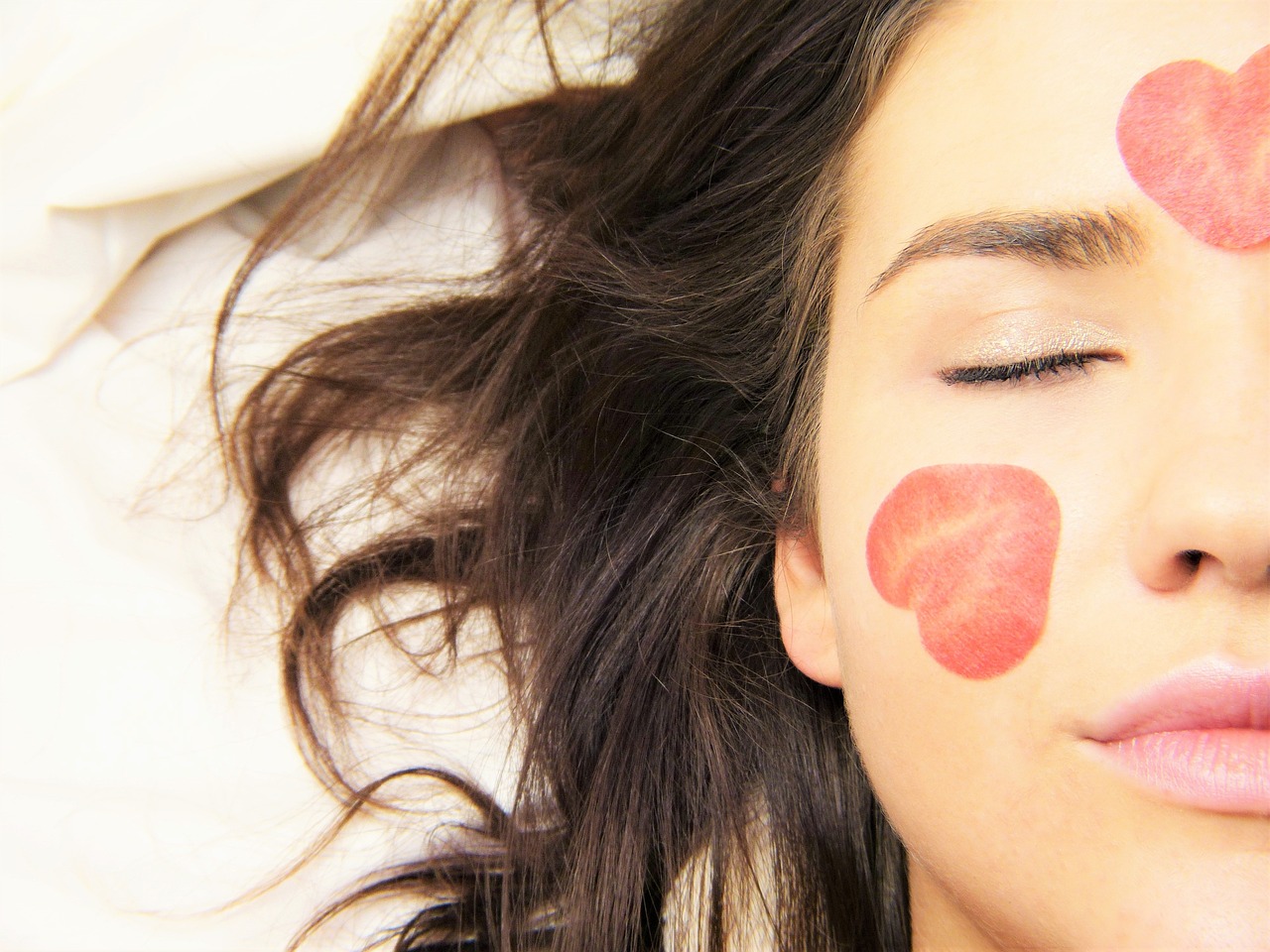
Your skin is uniquely yours, and understanding its type is the key to unlocking its healthiest, most radiant potential. Whether it’s oily, dry, sensitive, combination, or blessedly balanced as normal, each skin type has its beauty and needs. By identifying your skin type and adopting a thoughtful routine tailored to it, you’re not just caring for your skin—you’re fostering confidence and self-love. Skincare isn’t about achieving perfection but about consistency, patience, and listening to what your skin truly needs. At aayushii.com, we believe in celebrating the journey to healthy, glowing skin through understanding, care, and kindness—because when you care for your skin, you’re caring for yourself.
FAQ: Understanding 5 Skin Types
1. What are the five skin types?
The five main skin types are:
- Normal skin: Balanced, neither too oily nor too dry.
- Dry skin: Lacks moisture, may feel tight or flaky.
- Oily skin: Produces excess sebum, often shiny with visible pores.
- Combination skin: A mix of oily and dry areas, usually oily in the T-zone.
- Sensitive skin: Prone to irritation, redness, and reactions to products or environments.
2. How can I determine my skin type?
To identify your skin type:
- Wash your face with a gentle cleanser and pat dry.
- Wait for about an hour without applying any products.
- Observe how your skin feels:
- Tightness indicates dry skin.
- Shine all over points to oily skin.
- Shine only in the T-zone suggests combination skin.
- No dryness or oiliness means normal skin.
- Redness, itchiness, or discomfort may suggest sensitive skin.
3. What is the best skincare routine for each skin type?
- Normal skin: Use a gentle cleanser, lightweight moisturizer, and sunscreen.
- Dry skin: Focus on hydration with creamy cleansers, rich moisturizers, and avoid harsh exfoliants.
- Oily skin: Use gel-based cleansers, lightweight moisturizers, and oil-free sunscreen.
- Combination skin: Use a balanced routine with products that target oily areas without over-drying.
- Sensitive skin: Stick to fragrance-free, hypoallergenic products and avoid harsh chemicals.
4. Can my skin type change over time?
Yes, your skin type can change due to factors such as age, hormones, climate, diet, and lifestyle. For example, skin tends to become drier with age or during colder seasons.
5. What are common mistakes in skincare for different skin types?
- Using products not suited for your skin type.
- Over-cleansing, which can strip the skin of natural oils.
- Ignoring sunscreen, regardless of skin type.
- Overusing exfoliants, particularly for dry or sensitive skin.
6. Are certain skin types more prone to acne?
Yes, oily skin is more prone to acne due to excess sebum production, which can clog pores. However, acne can affect all skin types due to factors like hormones, diet, and improper skincare.
7. How often should I adjust my skincare routine?
It’s a good idea to reassess your skincare routine with seasonal changes or when you notice significant shifts in your skin’s condition.
8. Are there universal skincare tips for all skin types?
Yes, these tips work for everyone:
- Stay hydrated and eat a balanced diet.
- Wear sunscreen daily.
- Avoid harsh products or over-exfoliating.
- Remove makeup before bed.


